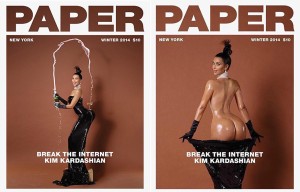This article by Christopher Ingraham discusses the racial divide between races and their social groups. Based on research conducted by the Public Religion Research Institute (PRRI), in a scenario where an American has 100 friends, an average white American has 91 white friends and 1 black friend, while an average black American has 83 black friends and 8 white friends. Ingraham uses these statistics as well as others compiled by PRRI to explain why this occurs and how it contributes to the racial divide on responses to racial events such as Ferguson. Ingraham speaks to the whole American population with a goal to inform them of this trend and force them to see how this impacts their daily lives.
I found this article astonishing. It was very surprising to learn the lack of diversity that exists in average American’s friend group, both white and black. I think mostly because I have grown up with so much diversity around that I never really noticed. It was mind boggling that 75% of white Americans only have white friends. However, after reading the article and thinking back to high school, I could definitely recall friend groups that existed that were 100% white, and it began to make sense on why some of them react a certain way when a racial issue arises. I could also reason to why some white Americans may only have white friends. Location plays a huge role. It is hard for a person to have diverse friends when they do not live in an diverse areas, and there are places in the US where little to black people reside there.
I am often the only black person in my friend circles, and during social injustice movements is often where I feel the disconnect. In most cases, many whites do not see the racial issue in these situations. They see it as playing the “race card.” They do not see the events are something racially driven, which I now understand because they have no experience or history. They have not been exposed to it. That is the problem with many movements driven by minorites. The majorities that such it down as not a problem have never experienced it or witnessed it. Therefore, do not believe it to be a problem. When Ferguson happened, my Twitter feed had never been so divided. They were people angered by the police’s action, wanting to join the protestors, and starting their own protests. While I noticed other people I followed, majority white, tweeting about how it was not a race issue. I even remember someone saying that Michael Brown was a “thug” who “deserved it.” it shows how lack of culture and diversity can close a person mind in order to only view it in one light. This article definitely touched at that. So my question would be how do we fix it?
How do we fix the lack of diversity in social groups? How do we open up the minds to those who have not experienced or witness discrimination to realize that it is a real problem? How do we create less of a divide in responses to human injustices?
